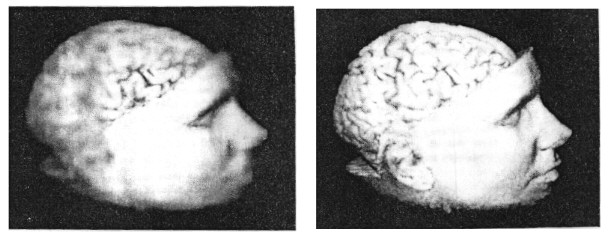3D MIP-MAP
The 3D mip-map is a 3D extension of the 2D mip-map ([8])
for textures. The 3D mip-map is used in the field of visualization for
the gaze-directed volume rendering ([7]). The
gaze-directed volume rendering approach generates variable resolution images,
in the gaze direction (viewing direction) a high-resolution image part
(circular section) and a lower-resolution background image. In order to
generate such a variable-resolution image you need a different density
of rays which are cast in the volume (the nearer to gaze-direction, the
more rays per area unit) and different spacings between the samples along
a ray (the nearer to gaze-direction, the smaller are the spacings between
the samples). In order to avoid generating artifacts (depending on ray
density) a 2D covolution mask is used, in order to avoid undersampling
(different sample spacings) a 3D convolution mask is used, which is used
for calculating one sample. Since both masks have continuously different
sizes (depending on the necessary local resolution) they are not efficient
to apply, therefore for acceleration a 2D mip-map is used for the 2D convolution
mask and a 3D mip-map for the 3D convolution mask.
The 3D mip-map contains prefiltered and resampled average color and
opacity. So if you need the sample from a continuously variable resolution
3D convolution mask, which is similar to a corresponding variable resolution
volume data, you determine the corresponding next higher-resolution and
lower-resolution volume in the 3D mip-map. Then you resample in the 8 surrounding
voxels in the determined two levels by trilinear interpolation. This two
calculated values are linear interpolated between the two mip-map levels
for the wanted mask size (or variable resolution volume) among the levels.
With gaze-directed volume rendering including 3D mip-map as one acceleration
approach the rendering is up to five times faster than normal volume rendering.
 Comparison gaze-directed (left) and normal (right)
volume rendering
Comparison gaze-directed (left) and normal (right)
volume rendering
Main Page

